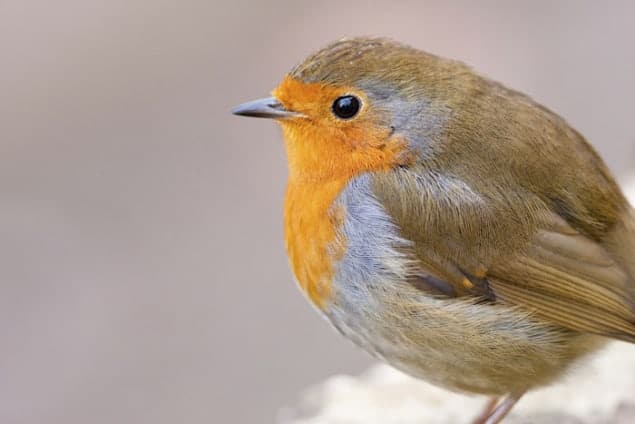
A new general approach for evaluating the “quantumness” of biological processes such as the ability of some birds to sense the Earth’s magnetic field has been developed by physicists in Switzerland and the US. It involves describing the process as a “quantum meter” that uses quantum coherence to measure magnetic-field strength or light intensity. Atac Imamoglu of ETH Zürich and Birgitta Whaley of the University of California, Berkeley, have applied their framework to bird navigation and photosynthesis, and have concluded that only the former is completely dependent on quantum coherence.
Scientists believe that some species of birds navigate using Earth’s magnetic field – an idea known as magnetoreception that is backed up by experiments that show that captive birds will respond to changing magnetic fields. Understanding how this happens is tricky. Although electron spins in biological molecules are affected by the Earth’s magnetic field, the size of the effect is so small that it should be completely washed out by thermal fluctuations. However, some quantum systems can be extremely sensitive to external magnetic fields, and this is why scientists believe that some birds could navigate by making quantum measurements.
Radical measurements
One such bird is the European robin, which appears to have magnetoreceptor molecules located in its visual system. Physicists believe that the measurement process is triggered when a “cryptochrome” protein absorbs light. This causes a flavin adenine (FAD) nucleotide on the protein to form an excited singlet spin state, which involves two electron spins with a combined spin of zero. This state then decays in picoseconds to a “radical pair state” in which the spin of one of the FAD electrons is transferred to an amino acid that is located about 1.5 nm away along the length of the protein.
This transfer is believed to preserve quantum coherence and because each spin is isolated from its surroundings, the resulting radical pair remains in a coherent quantum state for times greater than 10 ns. This, physicists believe, should be long enough for a robin to make a quantum measurement.
The direction in the protein along which this separation occurs provides a spatial reference for measuring the Earth’s magnetic field. In particular, the relative orientation of the separation direction and the Earth’s field affects the rate at which the radical pair will decay to a protonated state that provides a signal to the bird’s nervous system. Scientists believe that it is this protonated state – or subsequent chemical reactions – that links the bird’s sensory system to the magnetic-field measurement.
Success hinges on coherence
In this new work, Imamoglu and Whaley developed a general approach for looking at the interactions involved in the magnetic-field measurement, to work out whether the system is indeed a quantum meter. In the case of magnetoreception, they conclude that the measurement process hinges on the long-lived quantum coherence of the radical pair. Indeed, Imamoglu told physicsworld.com that quantum coherence boosts the ability of the system to measure magnetic fields by many orders of magnitude.
However, when Imamoglu and Whaley applied their analysis to photosynthesis, they came to a very different conclusion. In this case, the quantum meter is a collection of chromophore molecules, which transfer energy from absorbed sunlight to a “reaction centre” where the energy is extracted in the form of mobile electrons. Therefore, the quantum meter measures the intensity of the sunlight in terms of the rate at which electrons are produced.
The measurement process begins with sunlight “pumping” the chomophores from their electronic ground state into an excited state. Energy is then transferred from this state to the reaction centre by excitons (electron–hole pairs) that must first find their way through a labyrinth of chromophores. This involves hopping from molecule to molecule in a process similar to a random walk. This transfer occurs more rapidly and more efficiently than expected. This has led some physicists to suggest that the excitons travel through the chromophores via a coherent quantum superposition of all possible pathways, which could allow the excitons to find the most efficient route to the reaction centre with very few excitons being lost along the way.
Minor improvement
To decide whether coherent transfer makes a difference, Imamoglu and Whaley looked at the relevant timescales. If the excitons remained coherent for relatively long periods of time, they should be more likely to reach their destination and therefore boost the performance of the quantum meter. What the researchers found, however, is that this enhancement is at best 5–10%, and therefore photosynthesis could function without the need for quantum coherence.
Gregory Scholes of Princeton University told physicsworld.com that the role of quantum coherence in photosynthesis is still a matter of scientific debate. “My opinion is that coherence (whether or not it’s quantum I don’t specify) is the unavoidable consequence of fast energy transfer in a compact light-harvesting complex,” he explains. “So nature may not be targeting coherence, but it may use it ‘unknowingly’ by optimizing energy transfer rates.”
The research is described in Physical Review E.
- There is much more about the quantum nature of life in the article “The quantum life” by Paul Davies



